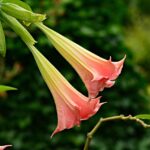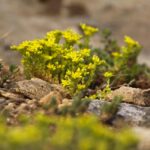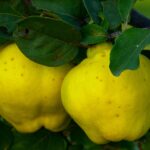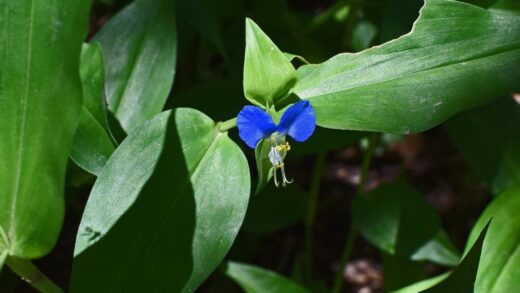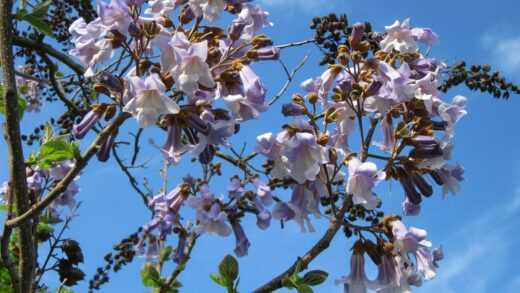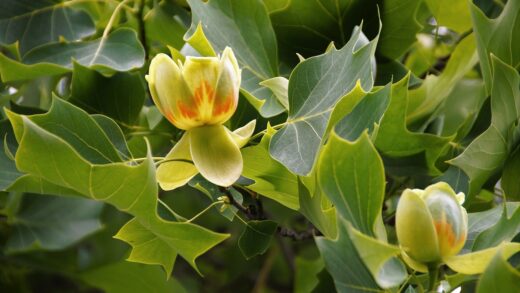Embarking on the journey of planting a plumeria, whether from a rooted plant or a fresh cutting, is a rewarding endeavor that brings a piece of the tropics to your home. The process is not overly complex, but success hinges on understanding the plant’s specific needs for well-draining soil, warmth, and proper moisture management from the very beginning. By establishing a strong foundation during the planting phase, you set the stage for a healthy, resilient plant capable of producing its famously beautiful and fragrant flowers. Propagation, likewise, offers an exciting opportunity to multiply your collection or share these stunning plants with others, turning a single specimen into many.
Selecting the right foundation: a plant or a cutting
Choosing your starting material is the first critical decision in the process of growing a plumeria. You can begin with a fully rooted, nursery-grown plant or an unrooted cutting. A rooted plant offers the advantage of being already established, often resulting in faster growth and a shorter waiting time for the first blooms. When selecting a nursery plant, look for one with firm, healthy stems, no signs of pests or disease, and a well-developed root system, which you can sometimes gauge by checking the drainage holes for small roots.
Alternatively, starting with a cutting can be an incredibly gratifying experience, allowing you to witness the entire life cycle from rooting to flowering. Cuttings are typically sections of a mature branch, and they should be firm, healthy, and preferably taken from a plant with desirable flowering characteristics. The cut end of the section should be allowed to dry and form a callus for several days to a week before planting; this is a crucial step that prevents the raw tissue from rotting when it comes into contact with the moist soil.
The size and maturity of the cutting can influence how quickly it establishes and flowers. Longer, thicker cuttings from older wood generally have more stored energy and tend to root more robustly and bloom sooner than smaller, greener cuttings. A good quality cutting should be at least 25 to 30 centimeters long and have a woody appearance. Avoid cuttings that are shriveled, soft, or have signs of blackening at the tip, as these are indicators of poor health or improper storage.
Whether you choose a rooted plant or a cutting, understanding its provenance can be beneficial. Knowing the parent plant’s cultivar can give you an idea of the flower color, size, and fragrance to expect. It can also provide clues about the plant’s growth habit, whether it will be tall and slender or more compact and branching. This information allows you to plan its placement in your garden or select an appropriately sized container for its long-term growth.
More articles on this topic
Preparing the ideal planting medium
The success of planting a plumeria is overwhelmingly dependent on the quality and composition of the soil mix. These plants are highly susceptible to root rot, making a well-draining medium absolutely essential for their survival and health. You must use a soil that allows water to flow through it quickly, preventing the roots from sitting in soggy conditions. A pre-packaged cactus or succulent mix serves as an excellent base for your plumeria’s new home, as these are specifically designed to be porous and fast-draining.
To optimize the planting medium, it’s advisable to amend the base cactus mix with additional components that further improve aeration and drainage. Adding a generous amount of perlite, pumice, or even small lava rocks to the mix is a standard practice among experienced growers. A highly effective and recommended ratio is one part cactus mix to one part perlite or pumice. This 50/50 blend creates a light, airy substrate that closely mimics the sandy or volcanic soils of the plumeria’s native tropical habitat.
Before you begin planting, it is good practice to pre-moisten the soil mix slightly. This makes the medium easier to work with and ensures that there are no dry pockets within the pot after planting. The soil should be just damp enough to hold together loosely when squeezed, but not so wet that water drips out. Overly wet soil can compact easily and create an anaerobic environment that is detrimental to the developing roots of a new plant or cutting.
For gardeners planting directly into the ground in suitable climates, soil preparation is equally critical. If you have heavy clay soil, you must amend the planting area extensively to improve its drainage. Dig a hole significantly larger and deeper than the plant’s root ball and backfill with a mixture of the native soil, organic compost, and large amounts of sand or fine gravel. Creating a raised bed or mound for the plumeria can also be an effective strategy to ensure that water drains away from the root zone quickly.
More articles on this topic
The process of planting a rooted plumeria
When planting a plumeria that is already rooted, the first step is to choose an appropriate container. The pot should be only one size larger than the nursery pot it came in, as a pot that is too large will hold excess moisture and increase the risk of root rot. Ensure the new pot has ample drainage holes; multiple large holes are far better than a single small one. This feature is non-negotiable for the long-term health of your plant, as it is the primary defense against waterlogged soil.
Carefully remove the plumeria from its original container, taking care to disturb the root ball as little as possible. It can be helpful to gently squeeze the sides of the nursery pot to loosen the soil before tipping it over. Once removed, inspect the roots for any signs of damage or decay; healthy roots should be firm and white or light tan in color. If you find any mushy, dark, or circling roots, you can carefully prune them with a sterile cutting tool before planting.
Place a layer of your prepared well-draining soil mix in the bottom of the new pot, and then position the plumeria’s root ball in the center. The top of the root ball should sit about an inch or two below the rim of the pot to allow space for watering. Fill in the surrounding area with more of the soil mix, gently firming it down with your hands to eliminate any large air pockets. Avoid compacting the soil too tightly, as this would defeat the purpose of creating an airy, well-draining medium.
After the plumeria is securely in its new pot, water it thoroughly until you see water flowing freely from the drainage holes. This initial watering helps to settle the soil around the roots and eliminates any remaining air gaps. After this first watering, allow the top few inches of soil to dry out completely before watering again. Place the newly potted plant in a location where it will receive plenty of bright, indirect light initially, and then gradually acclimate it to full, direct sun over the course of a week or two to prevent sunburn on the leaves.
Propagating plumeria from cuttings
Propagating plumeria from cuttings is a straightforward and highly effective method for creating new plants. The first and most critical step is to allow the cut end of the stem to “cure” or “callus over” before planting. This involves placing the cutting in a dry, shady, and well-ventilated area for at least one to two weeks. During this time, the raw, open wound at the base will dry and form a protective callus, which acts as a barrier to prevent rot-causing fungi and bacteria from entering the stem once it is planted in moist soil.
Once the cutting has formed a firm callus, it is ready for planting. Select a pot, typically a one or two-gallon size for a standard cutting, that has excellent drainage. Fill the pot with your prepared, fast-draining soil mix, such as a 50/50 blend of cactus soil and perlite. Before inserting the cutting, you can optionally dip the callused end in a rooting hormone powder. While not strictly necessary, rooting hormone can help to stimulate faster and more robust root development, increasing the chances of successful propagation.
Insert the callused end of the cutting about two to three inches deep into the soil. Be careful not to plant it too deeply, as this can increase the likelihood of the buried portion of the stem rotting. Gently firm the soil around the base of the cutting to hold it securely in place. If the cutting is top-heavy and unstable, you can use stakes or rocks to prop it up until it has developed roots to anchor itself, which is essential to prevent it from moving and damaging the delicate new roots as they form.
Watering a new cutting requires a very different approach than watering an established plant. After the initial light watering to settle the soil, you should water very sparingly until leaves begin to appear. A newly planted cutting without leaves has no way to transpire water and is extremely susceptible to rot if the soil is kept too moist. A general guideline is to provide only about a cup of water once a week, or just enough to keep the soil from becoming completely bone dry. Place the pot in a warm location with bright, indirect light to encourage rooting, which can take anywhere from six to ten weeks.
Growing plumeria from seeds
Growing plumeria from seed is a fascinating process, though it requires more patience than propagation from cuttings, and the resulting plant may not be identical to its parent. The first step is to acquire fresh, viable seeds, which are contained within long, bean-like pods that appear after a flower has been successfully pollinated. The seeds themselves have a plump end and a thin, papery “wing.” For the best germination rates, it is crucial to use seeds that are as fresh as possible.
To plant the seeds, prepare a tray or small pots with a light, sterile seed-starting mix that drains well. The most common and effective method for planting is to gently press the plump end of the seed into the soil, leaving the papery wing sticking straight up out of the medium. The wing should remain exposed to the air; burying the entire seed can inhibit germination and lead to rot. This orientation ensures the emerging root can easily grow downwards into the soil.
After planting, the soil should be kept consistently moist but not waterlogged. Misting the soil surface with a spray bottle is an excellent way to maintain the right level of moisture without dislodging the seeds. Place the seed tray in a warm location with plenty of bright, indirect light. A heat mat placed under the tray can also be very beneficial, as warm soil temperatures significantly speed up and improve the rate of germination. You can typically expect to see seedlings emerge within one to three weeks.
Once the seedlings have germinated and developed their first few sets of true leaves, they can be carefully transplanted into their own individual pots. Use the same well-draining soil mix recommended for mature plumerias. From this point on, care for the seedlings as you would a small plumeria plant, providing plenty of light, warmth, and appropriate watering. Be aware that plumerias grown from seed can take several years—often three to five or even longer—before they mature enough to produce their first flowers.








